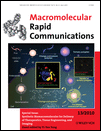Efficient Liposomal Nanocarrier-mediated Oligodeoxynucleotide Delivery Involving Dual Use of a Cell-Penetrating Peptide as a Packaging and Intracellular Delivery Agent
Abstract
The effective use of oligonucleotide therapeutics, such as antisense oligodeoxynucleotides (ODNs) and small interfering RNAs (siRNAs), requires efficient delivery systems capable of intracellular penetration. Cell-penetrating peptides (CPPs), including arginine-rich peptides, have been extensively studied as tools for enhancing intracellular uptake efficiency of various bioactive molecules, including nanoparticles and liposomes. CPPs also have an ability to form tight complexes with nucleic acids, such as ODNs and siRNAs, making CPPs effective as packaging agents. Here, we constructed a CPP-modified liposome loaded with complexes of nona-arginine (9R) and NF-κB decoy ODNs, and evaluated intracellular uptake and anticancer activity in vitro. We found that 9R/ODN complexes were efficiently loaded into liposomes that were effectively internalized into U87MG glioblastoma cells and sensitized cells to the effects of paclitaxel. To the best of our knowledge, this is the first report describing the dual use of 9R CPP as a cell penetrating and a complexing agent within a single nanoparticle.





